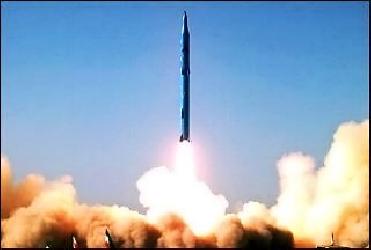
An artist's representation of the burst of gravitational waves resulting from the collision of a colliding pair of black holes. Image credit: LIGO Scientific Collaboration (LSC) / NASA.
LONDON (BNS): If a new finding by a group of scientists proves right, then astronomers could soon crack the mystery of gravitational waves which would give them a completely new insight into our Universe.
A gravitational wave is a fluctuation in the curvature of spacetime which propagates as a wave, traveling outward from its source. Sources of gravitational waves include binary star systems composed of white dwarfs, neutron stars, or black holes.
By modelling the behaviour of stars in clusters, a group of scientist from the University of Bonn�s Argelander-Institut fuer Astronomie has found that they are ideal environments for black holes to coalesce.
Such mergers produce ripples in time and space, i.e., gravitational waves that could be detected by instruments from as early as 2015, say the scientists who report their work in the Monthly Notices of the Royal Astronomical Society.
Star clusters, found in galaxies, harbour stellar members from a few to a several million depending on their shape and size. The highest mass stars in larger clusters burn up quite fast by using their hydrogen fuel. When the cores of such stars collapse, leading to violent supernova explosion, it leaves behind a stellar remnant with gravitational field so strong that not even light can escape it. That remnant takes the shape of a black hole.
When stars are as close together as they are in clusters, then although still rare events, the likelihood of collisions and mergers between stars of all types, including black holes, is much higher.
The black holes sink to the centre of the cluster, where a core that is completely made of up of black holes forms. In the core, the black holes experience a range of interactions, sometimes forming binary pairs and sometimes being ejected from the cluster completely.
The Bonn researchers, led by Sambaran Banerjee, have worked to develop the first self-consistent simulation of the movement of black holes in star clusters.
The scientists assembled their own star clusters on a high-performance supercomputer, and then calculated how they would evolve by tracing the motion of each and every star and black hole within them.
According to a key prediction of Einstein�s General Theory of Relativity, black hole binaries stir the space-time around them, generating waves that propagate away like ripples on the surface of a lake. These waves of curvature in space-time are known as gravitational waves and will temporarily distort any object they pass through.
However, no-one has succeeded in detecting them so far.
In the cores of stars clusters, black hole binaries are sufficiently tightly bound to be significant sources of gravitational waves. If the black holes in a binary system merge, then an even stronger pulse of gravitational waves radiates away from the system.
Based on the new findings, the next generation of gravitational wave observatories, like the Advanced Laser Interferometer Gravitational-wave Observatory scheduled to be operational by 2015, could detect tens of such events each year.
 Previous Article
Previous Article Next Article
Next Article












The Indian Air Force, in its flight trials evaluation report submitted before the Defence Ministry l..
view articleAn insight into the Medium Multi-Role Combat Aircraft competition...
view articleSky enthusiasts can now spot the International Space Station (ISS) commanded by Indian-American astr..
view article